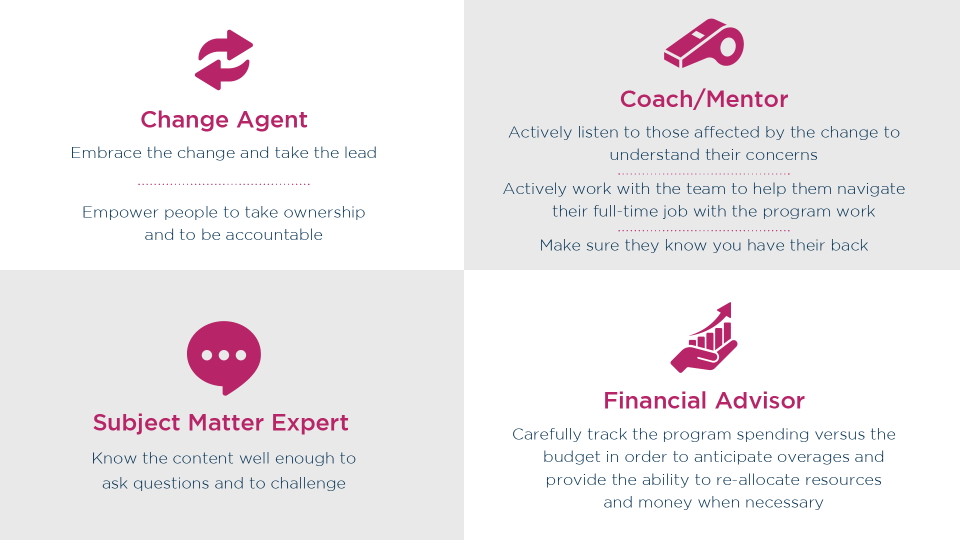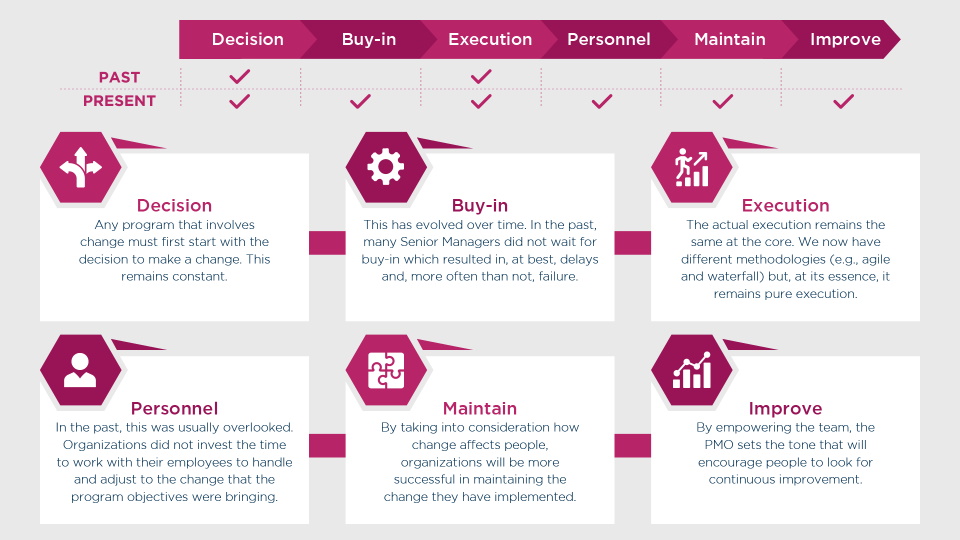Flashback to the 1990s
For PMO work in the early 1990s, the primary requirement was the execution of the project plan, and top-of-mind questions looked like these:
- Was the work completed? On time? On budget (if you’re lucky)?
- Was the strategic objective achieved?
- Were risks mitigated and compliance attained?
Mostly ignored back then, however, were a few other questions that we’d find very important nowadays:
- How was the work completed?
- How will the change affect our people?
- How will we sustain the change?
Any modern executive knows that these are important matters.
See, gone are the days where an organization can merely implement a new system, install a new process, or re-organize itself and believe that the change will not only stick, but also have a positive effect.
These projects require a new kind of management discipline.
You Will Always Need a PMO
Let’s get this out of the way first: the PMO isn’t going anywhere.
With a constantly shifting business landscape, an increasingly dispersed workforce, and the ultra-rapid pace of technological advancement, there is – and will continue to be – no shortage of work for an overarching team of skilled wranglers.
Delivery methodologies may change, but the primary responsibility of project management is the same: to orchestrate efforts among disparate teams and platforms to reach common project objectives.

As an analogy, sports are now played differently, and they even have new rules. Professional athletes are bigger, stronger, and faster.
However, a football field is still a hundred yards, bases are still ninety feet apart on the diamond, the height of a basketball hoop is still ten feet, and a hockey net is still four feet by six feet. The end goal remains to score more than your opponent. There are just different ways to get there now – and the right team with the right skills and perspective is critical to winning.
Evolving the PMO Team
It’s no longer just knowledge of Gantt charts and Excel.
Project Management professionals today are agents for change, subject matter experts, coaches/mentors, and financial advisors. Match the right skills with these roles, and your team will be prepared to take the reins and add value.
When looking for a great project manager these days, seek out these characteristics, beyond traditional PM skills:

Evolving the PMO Process
Once upon a time, the PMO was mostly involved in two phases of any given project:
- Decision: a strategic stage, but a more tactical role for the PMO, focused on feasibility, RFPs, and technologies
- Execution: bringing the project to fruition and completion
Now more than ever, the PMO must be a strategic partner throughout the planning and implementation process, ensuring the organization is focused also on the human elements necessary to maximize acceptance, and ultimately long-term success.

Putting it All Together
By evolving both people and process, the new PMO is empowered to influence without authority and work across complex organizations to guide colleagues through the change.
This starts with a solid governance structure, active listening, and observing behaviors in order to identify those who are embracing or resisting change – and enabling them to be heard.
One big question remains: how should the PMO change with different delivery methodologies, such as agile?
There are different opinions… stay tuned!
Further Advisory helps companies strategize, plan, and deliver their most complex programs. From product launches to platform modernization to business transformation, we make strategy become a reality.




